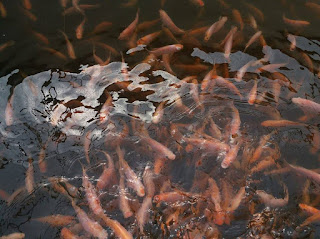Introduction
Aquaculture, the practice of cultivating aquatic organisms such as fish, shellfish, and plants in controlled environments, has gained significant attention as a sustainable solution to meet the growing demand for seafood. With overfishing and environmental concerns impacting wild fish populations, aquaculture offers a way to provide protein-rich food while reducing strain on natural ecosystems. In this article, we delve into the world of aquaculture, its benefits, challenges, and its role in ensuring a secure food future.
Benefits of Aquaculture
Sustainable Seafood Production: Aquaculture reduces the pressure on wild fish populations, which are declining due to overfishing. By cultivating seafood in controlled settings, we can ensure a steady supply of fish without compromising ocean biodiversity.
Resource Efficiency: Unlike traditional fishing, which can result in bycatch and habitat destruction, aquaculture minimizes waste and has a lower environmental footprint. Controlled environments allow for efficient use of resources such as water and feed.
Food Security: With a rapidly growing global population, aquaculture plays a crucial role in providing a reliable source of protein. It reduces dependence on dwindling wild fish stocks and contributes to meeting nutritional needs worldwide.
Challenges and Solutions
Environmental Impact: Intensive aquaculture can lead to pollution, disease outbreaks, and habitat degradation. However, sustainable practices such as integrated multitrophic aquaculture (IMTA) and proper waste management can minimize negative impacts.
Disease Management: Overcrowded conditions in aquaculture facilities can lead to disease outbreaks among aquatic organisms. Regular health monitoring, responsible stocking densities, and biosecurity measures help prevent and manage diseases.
Feed Dependency: Many farmed fish require fishmeal and fish oil from wild-caught fish as feed, which raises concerns about sustainability. Researchers are working on alternative feeds made from plant-based ingredients and algae, reducing the need for wild fish in feed production.
Innovations in Aquaculture
Recirculating Aquaculture Systems (RAS): RAS use advanced filtration and water treatment technologies to recirculate water within the system, reducing water usage and environmental impacts.
Offshore Aquaculture: Moving aquaculture operations offshore can minimize conflicts with coastal ecosystems and provide larger, more controlled environments for fish cultivation.
Selective Breeding: By selectively breeding fish for desirable traits such as growth rate and disease resistance, aquaculturists can enhance productivity and reduce the need for antibiotics.
Conclusion
As the global demand for seafood continues to rise, aquaculture offers a sustainable path forward. By adopting responsible practices, embracing innovation, and prioritizing environmental stewardship, aquaculture can provide a consistent and eco-friendly source of seafood. From reducing overfishing to enhancing food security and minimizing environmental impacts, the aquaculture industry is poised to play a crucial role in shaping a more sustainable future for both our oceans and our plates.
 Accueil
Accueil

























 Accueil
Accueil